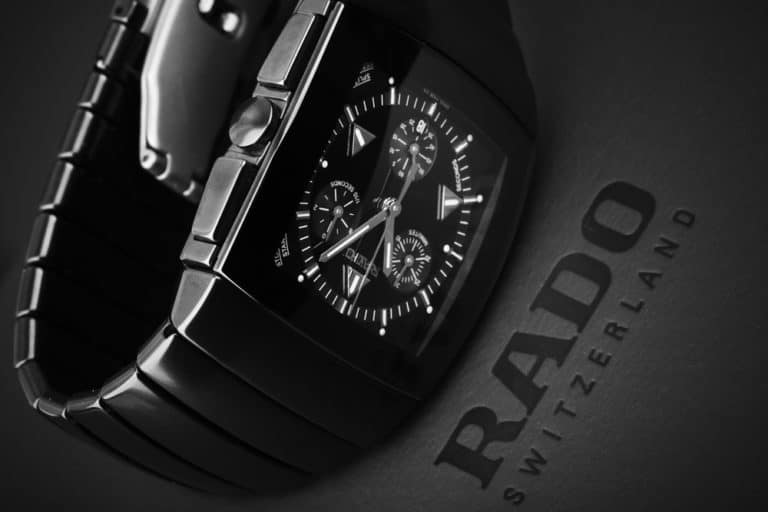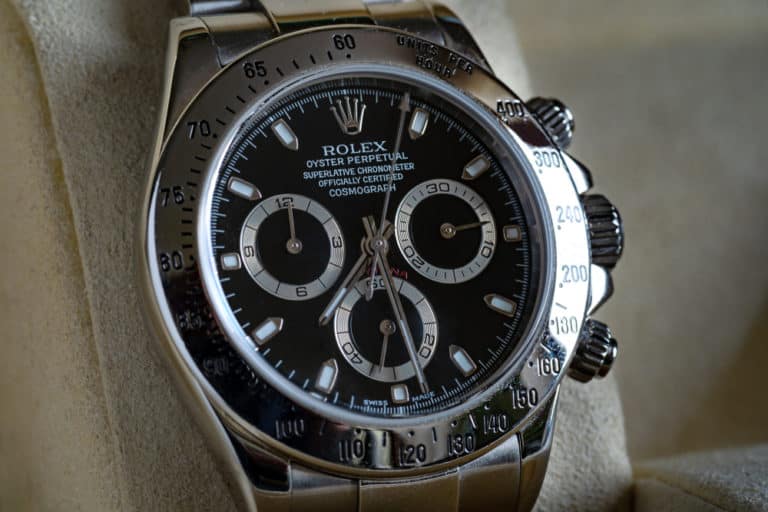The debate around the various types of watch movements and their advantages and disadvantages is as old as the art of horology itself. Our ancestors could’ve come to fisticuffs over who had designed the better sundial. So, are Chinese watch movements any good?
The quality of Chinese watch movements varies depending on the type. Chinese mechanical watch movements are not very good.; their cheap parts lack accuracy, longevity, and reliability. However, the Chinese Quartz movement can be considered very good because of its simple design.
As a result, you’ll never find a luxury watch housing a movement from China. Luxury brands almost always utilize a movement designed and crafted in the same region, compared to the inferior quality and easily corrodible materials China produces.
What Are The Most Popular Watch Movements?
Nevertheless, more than a handful of global brands still utilize Chinese movements.
Brands in the lower, cheaper segment will utilize a quartz movement originating in China. In contrast, mid-range and some high-end brands will use mechanical and quartz movements from China. These brands focus less on precision timekeeping and more on sales, marketing, and fashion statements.
So, before discussing which Chinese watch movements are workable, we must understand what selection we have.
Mechanical
The oldest and most authentic watch movement you may find. Mechanical movements have a complex function with tiny cogs and gears. They require steadfast “winding” These watches are often handmade and fall into the high-end and luxury watches segment.
To differentiate them from automatic watches, we call timepieces mechanical watches.
Automatic
Automatic watches have a self-winding movement that responds to motion to power the oscillator or rotor inside. They are a subtype of mechanical watches.
Quartz
Quartz timepieces have the most widely produced watch movement powered by a battery. Simple, effective, and highly accurate.
However, because they are so common, there’s a lot of variety regarding quartz watches and their batteries, even though they’re typically reliable.
Regardless, we can’t make a universal statement about them. A Swiss quartz movement will differ dramatically from its Chinese counterpart.
What Qualifies A Good Watch Movement?
A good watch movement maintains accuracy over the watch’s lifetime or at least between manufacturer-recommended service intervals.
To make a good quartz movement is no big deal for any industry producer. Although it may sound very posh, the battery-powered digitized oscillator is quite simple. It leaves almost no room for error and inaccuracy.
The challenges become more complex regarding mechanical and automatic watch movements.
Which materials did the watchmaker select? Have the components been hand-crafted or machine manufactured? What metals did they use for these components? Has the timepiece undergone rigorous shock and endurance testing?
Not only that, but we must also ask about the watch’s purpose. A fashion watch won’t be as durable as a diving watch; its movement might be less trustworthy.
These factors will all come together to create a masterpiece or a timepiece that will have you showing up 45 minutes late to Sunday lunch.
Of course, the ultimate affirmation of the superior calibration of a timepiece is if the Official Swiss Chronometer Testing Institute (COSC) has given its approval.
Regardless of where a watch comes from, if the COSC trusts it, so can you.

Chinese Quartz Movement Vs. Chinese Mechanical Movement
The Communist status of China affected change in everything. From family planning and food resources to job occupations and earning potentials. As unlikely as this statement sounds, this ideology even influenced watch movements.
“Tongji” is a mechanical movement considered the “Chinese standard movement” and was introduced in the late 70s to consolidate and unify the industry. In the following decades, the approximate units produced every year almost quintupled.
For a while, Tongji watches were excellent.
Unfortunately, changes in economic policies, replacement designs, land appropriation, and the introduction of the Quartz movement resulted in a massive decline in the quality of these movements.
However, the demand for Chinese watches didn’t fall, either. So, even though these timepieces’ quality went down, people still wanted affordable watches from China.
As such, China continued to produce cheap watches. The country had invested so much into setting up many standalone Tongji factories that they decided they would make the most of a bad situation.
The country that birthed modern mass production was now mass-producing inferior-quality mechanical movements. Despite their legacy, Tongji watchmakers couldn’t compete with their Quartz rivals, let alone European or Japanese mechanical watches.
However, that’s not to say that Chinese Quartz movements suffer the same fate. Because Quartz batteries are reasonably straightforward and reliable, even the Chinese versions are trustworthy. You can buy a good Quartz watch from a Chinese manufacturer.
Why Are Chinese Movements Still So Widely Produced?
You may wonder, if Chinese movements are so inadequate and incapable of accurately telling time, why are they still so massively produced?
Unfortunately, not everyone can afford a handcrafted time movement from Geneva, Switzerland.
It also seems that even the people who can afford it don’t always have the savvy to know a Swiss-made watch is what they should purchase.
Most significantly, the titan fashion labels have realized that consumerism doesn’t require intricate and complex wheels and cogs. It doesn’t require fine jewels or a well-balanced main spring. It requires only an essential function dressed up in pomp.
Another massive reason is the black market trade of replica watches, graded from A to AAA, an industry that’s booming to this very day and at this very current minute.
Despite how severely authorities punish counterfeiting, these fakes account for about 67% of all exports of watch movements from China. These are generally complete and assembled timepieces. Unless you are a horologist, it can be hard to distinguish them from the real deal.
Lastly, in recent times, China has begun to export unassembled movements and components for the individual end user.
These loose parts are ideal for somebody who wants to try horology. They aren’t just for individuals, though.
These Chinese movements are a godsend for entrepreneurs wanting to start up an artisanal assembly line. They let producers cut costs and focus on expressing personality and personal style instead of precise timekeeping. Depending on your tastes, that’s admirable. Indeed, it has led to a breakthrough in the diversity of fashion watches.
Conclusion
The movements put forth by China may not be very accurate, and they may not be able to endure the test of time., there’s no denying that the existence of Chinese movements is essential. They’re affordable and accessible.







